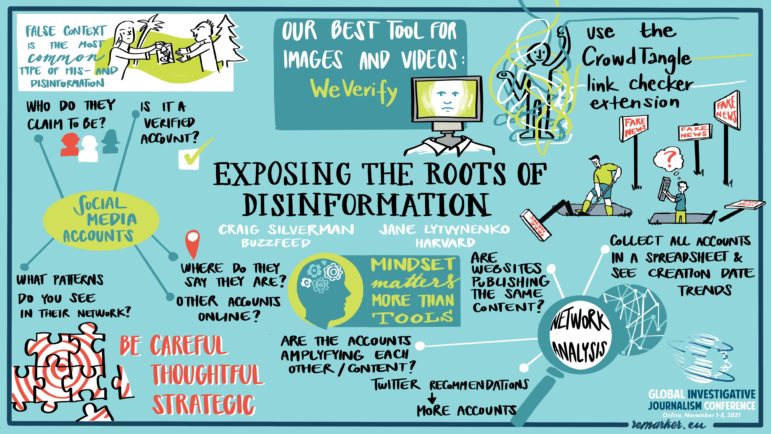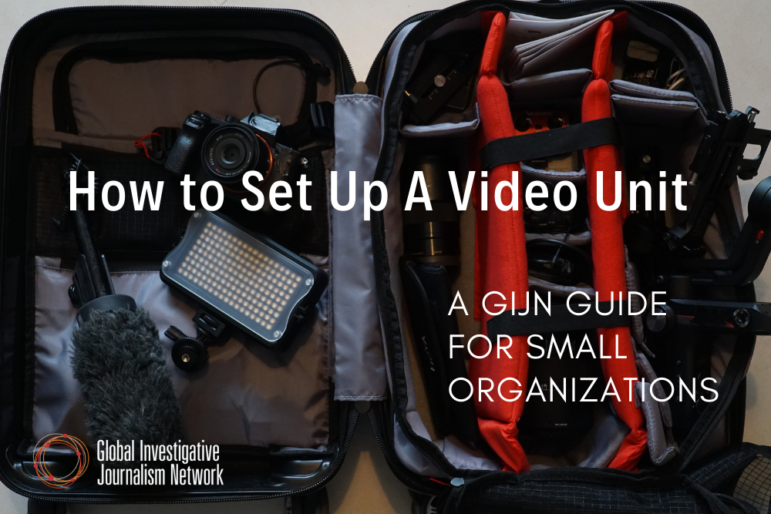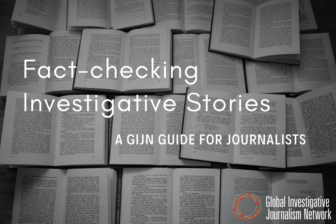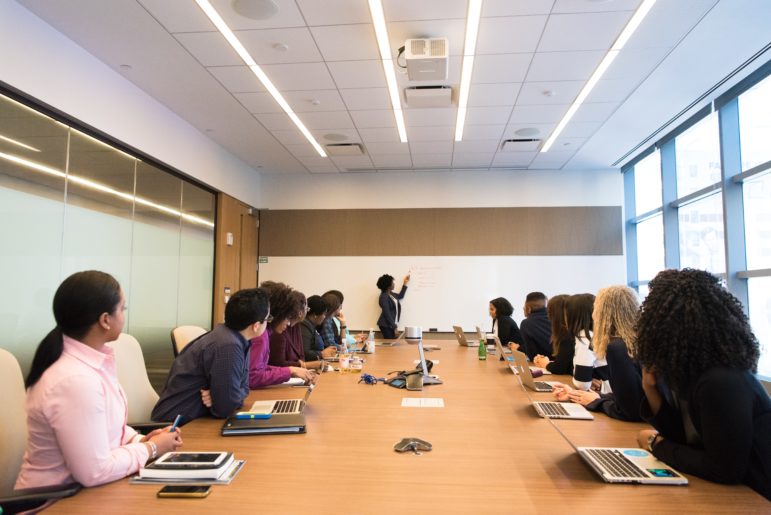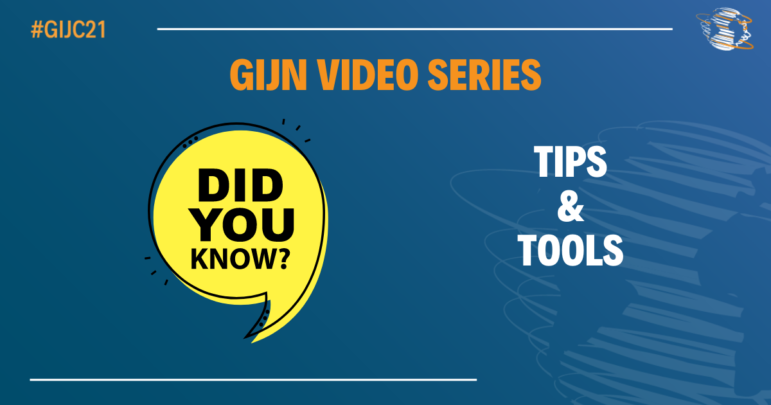

Illustration: Marcelle Louw for GIJN
A Guide to Fact-Checking Investigative Stories
Bulletproofing your story demands much more than getting the facts right. It requires a meticulous approach from the start in order to pass quality control.
Below you’ll find a system with three checkpoints that has been developed since 2004 by our newsroom at Uppdrag Granskning (Mission Investigate), the investigative television program at SVT, the national public broadcaster in Sweden. Over the years, Mission Investigate has produced internationally awarded stories on topics ranging from transnational bribery and organized crime to the Catholic Church and the UN. Along the way, our team has learned about how to avoid getting facts wrong and making sure our stories were challenged before publication – not after.
Hopefully, it will give you some inspiration.
The Three Checkpoints
Why checkpoints? It may seem unnecessarily bureaucratic, but without formalizing the process, there is a significant risk that necessary parts of the work will be left undone. Given the stakes involved, the effort is more than justified. The total time taken — a couple of hour-long meetings and a fact-checking session of up to one day – should not discourage any small newsroom, investigative reporter, or freelancer.
The reward will be peace of mind as publication approaches.
Checkpoint No. 1: The Start-up Meeting
After pre-research on the story idea, the reporter is ready to be challenged: Does the story’s central hypothesis — its theory of what needs to be investigated and why — hold up? What speaks against the hypothesis? This is the central question at the start-up meeting, where it is decided whether the project is worth investing in.
As reporters tend to neglect problematic aspects, there is a need to provide a counterweight with opposing views, also known as playing devil’s advocate. It can be an editor or a reporter willing to challenge colleagues. This person, who should be well prepared, will be a crucial part of the quality control process from start to finish.
This type of critical questioning can lead to tense moments, but ultimately, everybody understands that this is done with the best intentions.
Accountability is an essential item on the meeting checklist. A plan is drawn up for how and when to contact the subject of the investigation. For us, the general rule is to do this as soon as possible. One reason for this is to make sure you have a story, and another is fairness. There are exceptions, of course, as in repressive countries where you might need to wait until just before publication.
Checkpoint No. 2: The Midpoint Meeting
With at least a first draft ready, the purpose of this meeting is to discuss quality issues. There is still time for significant changes.
Ask the following:
- Conclusions: Is the hypothesis proven, or is an adjustment needed? Can the findings be questioned or disproved in any way? Can all other explanations be excluded?
- Accountability: Are we as fair as we can be? Are there any mitigating circumstances?
- Big picture: Is anything missing, or does anything feel out of place? Do we portray things too black and white?
You can report true facts without telling the truth. Unfortunately, reporters often exhibit confirmation bias in favoring information that confirms the story and ignoring contradicting facts. The result can be an absence of critically relevant facts and a seriously misleading investigation.
Only the reporter has complete insight into the selection of facts. The following questions require honest answers and they should be asked repeatedly during the storytelling process:
- Would other facts change the general picture?
- Would the public be disappointed if they knew what we have left out?
- Can we justify the selection without losing credibility?
Finally, these are two more items to check:
- Sources: Are they trustworthy? Are we asking the relevant critical questions? Have we done the necessary background checks?
- Experts: Are they representative? Have we made sure that the expert whom we rely on is current and trusted?
Checkpoint No. 3: Fact-checking
Before we do line-by-line fact-checking, we need to have a response to the allegations from the subject of the investigation. This person typically knows more about the case of wrongdoing than anyone else (including the reporter).
Even if you are delivering bad news, you and subject of the investigation may have at least one thing in common: the facts should be correct if they are to be published. Even if the people involved in your investigation decline to give you an interview, when you contact them it’s a good opportunity to let them respond to the facts.
It demands openness from your side by giving the subject of the investigation detailed information about the allegations. In some cases, maybe even informing them about the wording in the story is necessary. But never reveal details that may lead to sources.
Besides fact-checking with the “real expert,” the subject of the story, there are other benefits: You will get time to examine explanations and hopefully get new information to fill holes in the story. And it is certainly preferable to have a reaction before publication rather than afterwards.
Of course, there are many cases when you cannot use this transparent method. Dealing with violent groups or authoritarian governments, for example, demands another approach, as described in the GIJN article Tips for the No Surprises Letter. However, dealing with dangerous people does not reduce the need for being accurate and fair. On the contrary, it may be even more critical.
Now to the line-by-line process.
The principle is simple. Every verifiable piece of information in the story should be traced to a source. This fact-checking should be done with sufficient lead time before publishing, putting the demanding devil’s advocate in a central role.
For the process to be effective, the research documents should be readily available. Footnotes with links at the end of each script page or section make it easy to keep track of the documents.
Fact-checking demands total attention, but it can be hard to stay sharp during a long day. Therefore, it is wise to start with the central and more tricky issues. There is always something in the story that can be questioned. So, you need to focus on the essential things before getting carried away with details.
Don’t forget to ask: Are all conclusions well-grounded? They may be sharpened, or perhaps they need to be softened.
If the story is complex, research material should be handed over by the reporter before the fact-checking starts with an explanation of how the conclusion was reached. Sometimes, this can prove easier said than done. For example, findings could be based on complex research documents, like big datasets or figures from financial reports.
A preliminary, line-by-line session might be needed in such cases, maybe with an invited expert. If required, it might be possible to get external pro bono help to double-check facts or review the methodology.
Additional questions to be answered:
- Is the story fair and does it address counter-arguments?
- Do you have a response to all allegations with the most relevant answers? A check of the entire transcript of the interview may be necessary.
- Are all negative details about the subject of the investigation necessary? Are you open to relevant mitigating circumstances?
When doing the line-by-line editing, it is essential to check all the facts, even the seemingly harmless ones. The slightest mistake can be used by those who want to discredit you. Saying “I know it’s true” does not justify an exception.
Finally, re-check names, titles, dates, figures, and everything else that can be verified. That includes quotes – if an interviewee is wrong, you should know about it.
10 Fact-checking Tips
- Use original documents: When first-hand documents are possible to get, nothing else should be accepted.
- Check before quoting: Don’t rely on facts published by other media, no matter how credible they seem to be.
- Be precise with numbers: Keep away from the temptation to exaggerate. For example, if 12 people are affected, you should report that number (a fact) instead of stating “many” (a vague estimate).
- Keep your distance from victims: It doesn’t matter how much you believe in the victims, don’t take what they say as a fact unless it can be verified. For example, compare “He remembers nothing” (hard to verify) with “He says he remembers nothing” (his statement is a fact).
- Avoid difficult to prove value judgments: Taking conclusions one step too far can create unnecessary problems. For example, if you conclude the employer “ignored the safety rules,” you must prove they did so deliberately. But, on the other hand, saying the employer “did not follow the safety rules” is stating a fact.
- Be transparent with shortcomings: Be open to the public about what you don’t know. Beware of the temptation to insinuate something you cannot prove. Transparency strengthens your credibility, not least when you are open about shortcomings.
- Omit identifying details: Graphics, photos, and video material should be stripped of unnecessary private information: names and other details on documents, license plates, street numbers, and names on letterboxes.
- Do frame-by-frame analysis: Is the picture genuine or fake? Photos are often overlooked in fact-checking, as they are not in the script or text. However, Google Images, Facebook, and other platforms make it easy to find pictures — sometimes too easy. When necessary, check the origin, using image reverse search and other tools. (For more on this topic, read GIJN’s Four Quick Ways to Verify Images.)
- Finish with self-examination: Is something still gnawing at the reporters? Are there still doubts? Then, please, speak out, as this is the final chance to do so!
- Ensure the changes are implemented: All changes in the script or text, such as a corrected spelling of names, should be applied to the graphics and other parts of the publication. Therefore, a follow-up routine is necessary.
This process will inevitably reveal mistakes, which could have seriously damaged the credibility of the story and yourself as an investigative reporter. And even more important: It could have led to unjustified damage to the subject of the investigation.
By doing line-by-line editing, you will get an immediate reward as you will not wake up in the middle of the night in a cold sweat, worried about factual errors. Instead, you can sleep well in the knowledge that you have done what you can to minimize the risk of being wrong.
 Nils Hanson is an award-winning freelance investigative editor. For 14 years, until 2018, he was an executive producer for Mission Investigate. He has more than 30 years of experience and has covered around 500 investigations. During the last two years of his leadership, the program won ten international awards. His handbook on investigative journalism is required reading in Sweden.
Nils Hanson is an award-winning freelance investigative editor. For 14 years, until 2018, he was an executive producer for Mission Investigate. He has more than 30 years of experience and has covered around 500 investigations. During the last two years of his leadership, the program won ten international awards. His handbook on investigative journalism is required reading in Sweden.

